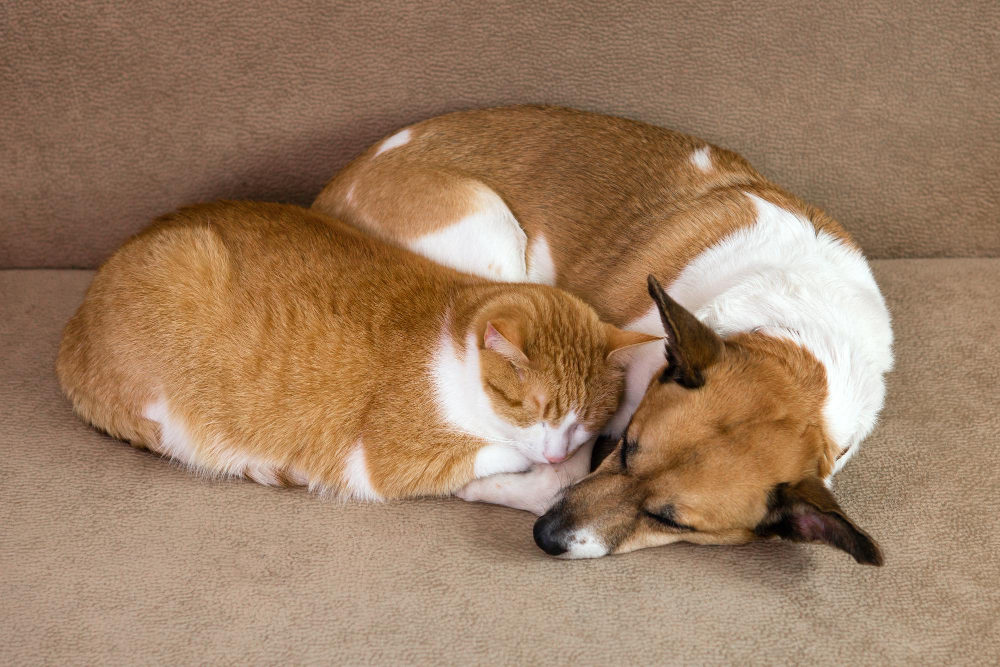Dogs and cats, our beloved companions, spend a significant portion of their lives in slumber. The amount of sleep varies among individuals and personalities, with dogs averaging around 14 hours a day and cats up to 18 hours. These numbers can fluctuate based on factors such as age and lifestyle.
The Mystery of Dreams: A Scientific Perspective
Dreams have long been a subject of fascination and study. In the realm of science, dreams are considered experiences of the unconscious mind during sleep, reflecting nocturnal brain activity. Sleep itself is divided into two main phases: the first, characterized by slow brain waves, and the second, known as REM (rapid eye movement), where images form like a movie in our imagination.
While psychoanalysts believe that dreams carry emotional charges, neuroscientists argue that they are merely disconnected information traffic that organizes the brain. A recent study published in 2020 in the Journal of Comparative Neurology indicates that all mammals, including dogs and cats, can experience dream mentalization.
Do Dogs and Cats Dream? A Closer Look
Both dogs and cats undergo the same sleep stages as humans, but most of their sleep is characterized by wakefulness. They are alert and easily awakened, responding to external stimuli. As they progress through the stages, brain wave activity becomes rhythmic, the heart rate slows, and the temperature drops, leading to the REM phase.
Unlike humans, who take about 2 hours to enter the REM phase, animals only need 20 minutes to start dreaming. So, the answer is yes, dogs and cats do dream! Those little sleep movements, like a dog shaking its tail or a cat purring, are manifestations of their dreams.
These dreams are often linked to the experiences of the environment in which they live, and they can range from positive and happy dreams to nightmares. Observing your pet’s behavior can provide insights into the nature of their dreams.
The Connection Between Dreams and Behavior
The behavior of dogs and cats is influenced by their living environment and routine. Many animals suffer from anxiety, boredom, and depression, which can affect their sleep. Agitated animals tend to have more vivid dreams and nightmares, while a noisy and unsafe environment can lead to sleep deprivation and behavioral changes.
Establishing a routine for feeding, walking, and environmental enrichment can reduce stressors in your pet’s daily life, thereby improving sleep quality.
Nightmares in Pets: Should You Wake Them Up?
Dreams occur during the deep sleep phase, with total body relaxation and intense brain activity. Nightmares are more common in pets that have experienced trauma or fear, which can resurface during sleep. When they have nightmares, we may feel compelled to wake them up, but this is not recommended. Instead, try talking to them softly while they sleep, as your voice can calm them down. If you must wake them, do so gently, without sudden movements, as this can lead to aggressive behavior on the part of your furry friends and cause accidents.
Understanding when to intervene and when to let the dream run its course is a delicate balance. If nightmares persist or seem to cause distress even during waking hours, consulting with a veterinarian or pet behavior specialist might be necessary. The key is to monitor the situation and intervene only when absolutely necessary, always with care and understanding.
The Importance of a Sound Sleep Routine
Sleep deprivation can lead to behavioral and health problems. During sleep, hormones are synthesized, and the immune system reaches its peak performance. Regular sleep ensures a better quality of life and cognitive function.
If your pet is anxious or agitated, food supplements can help improve sleep quality. Snacks with nutraceuticals such as chamomile, melatonin, and passion fruit extract can be beneficial.
Conclusion
Maintaining a sleep routine and enhancing the quality of life for your pets will not only provide them with happier dreams but also contribute to their overall well-being. Understanding the sleep patterns and dreams of dogs and cats opens a new window into their minds, allowing us to connect with them on a deeper level.

